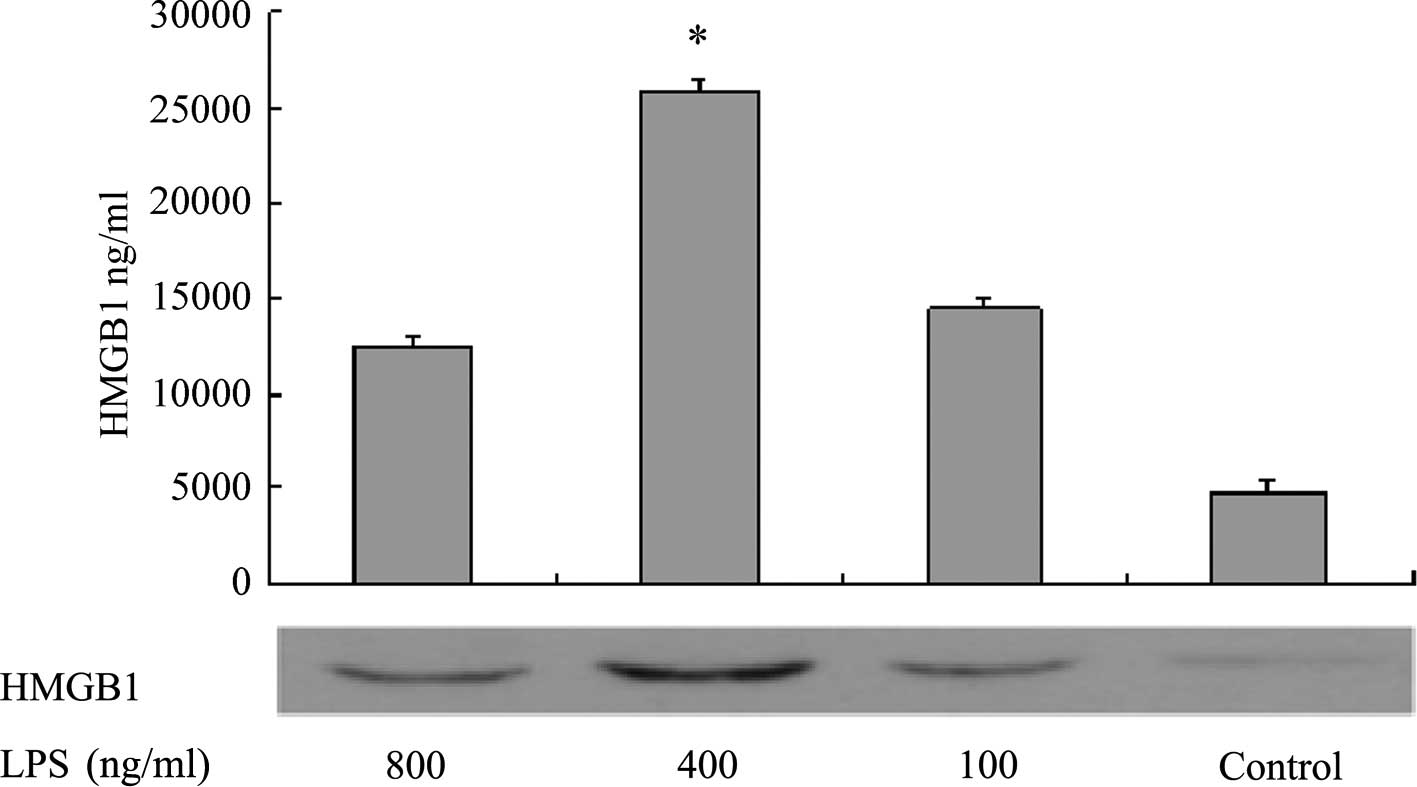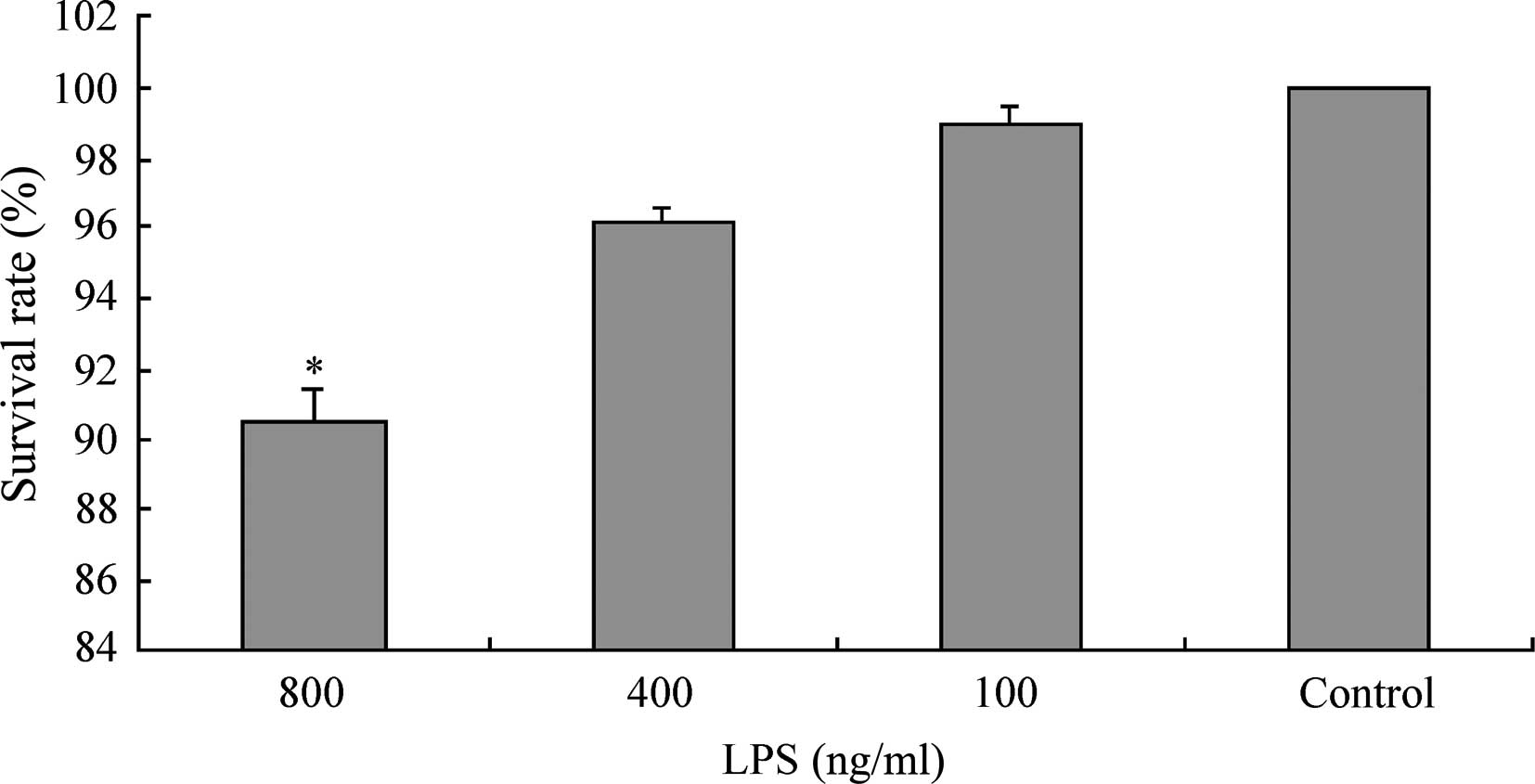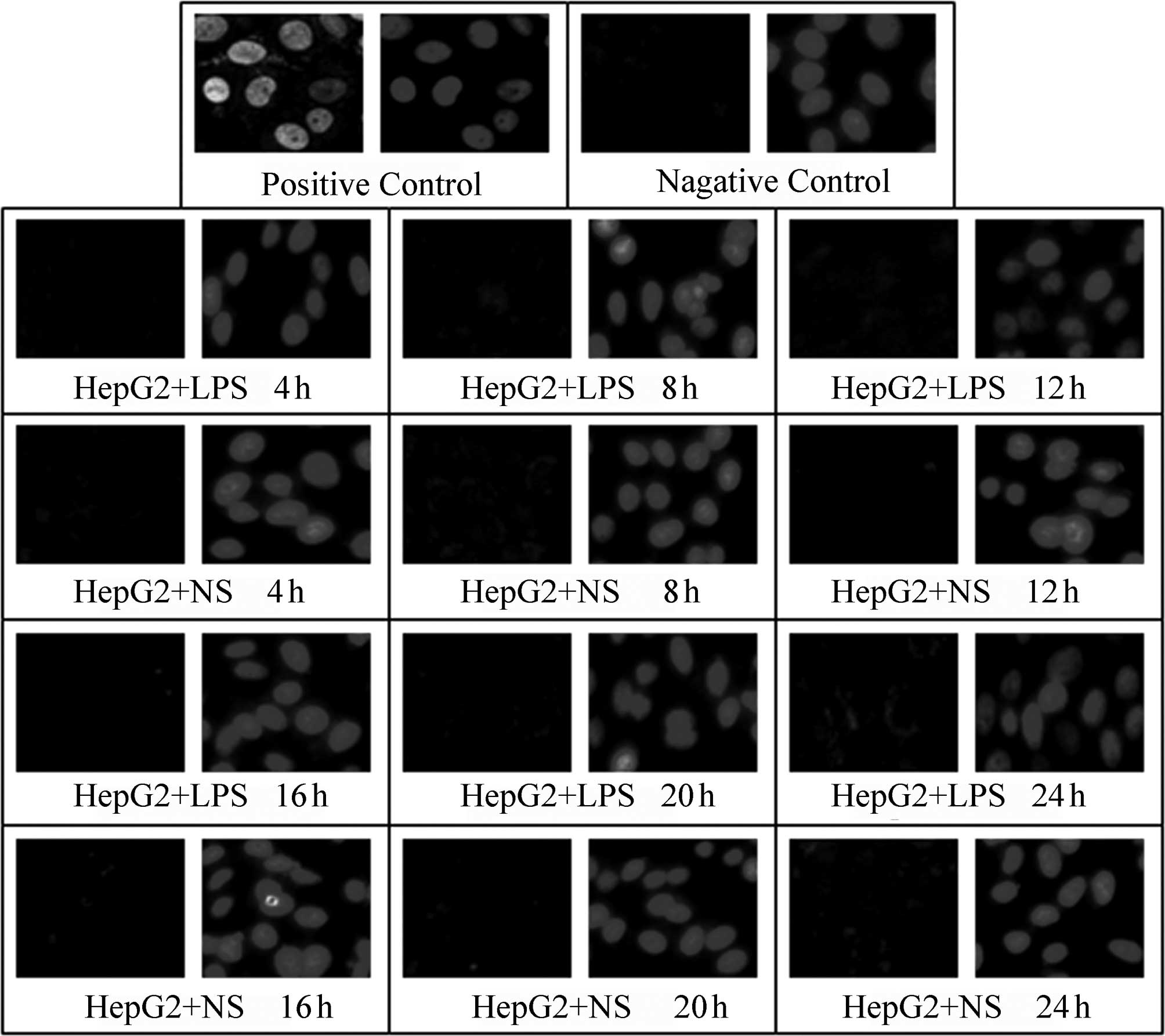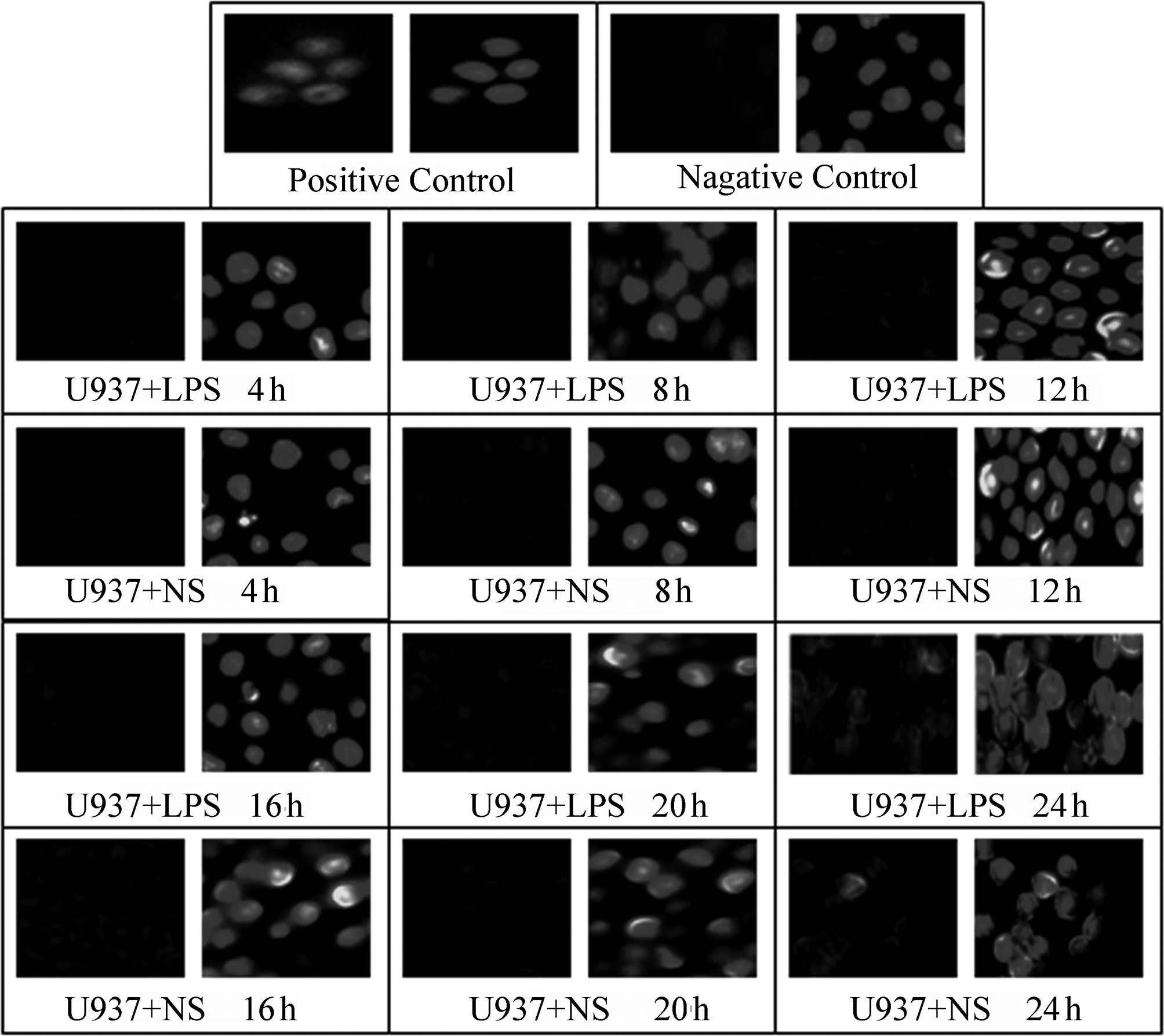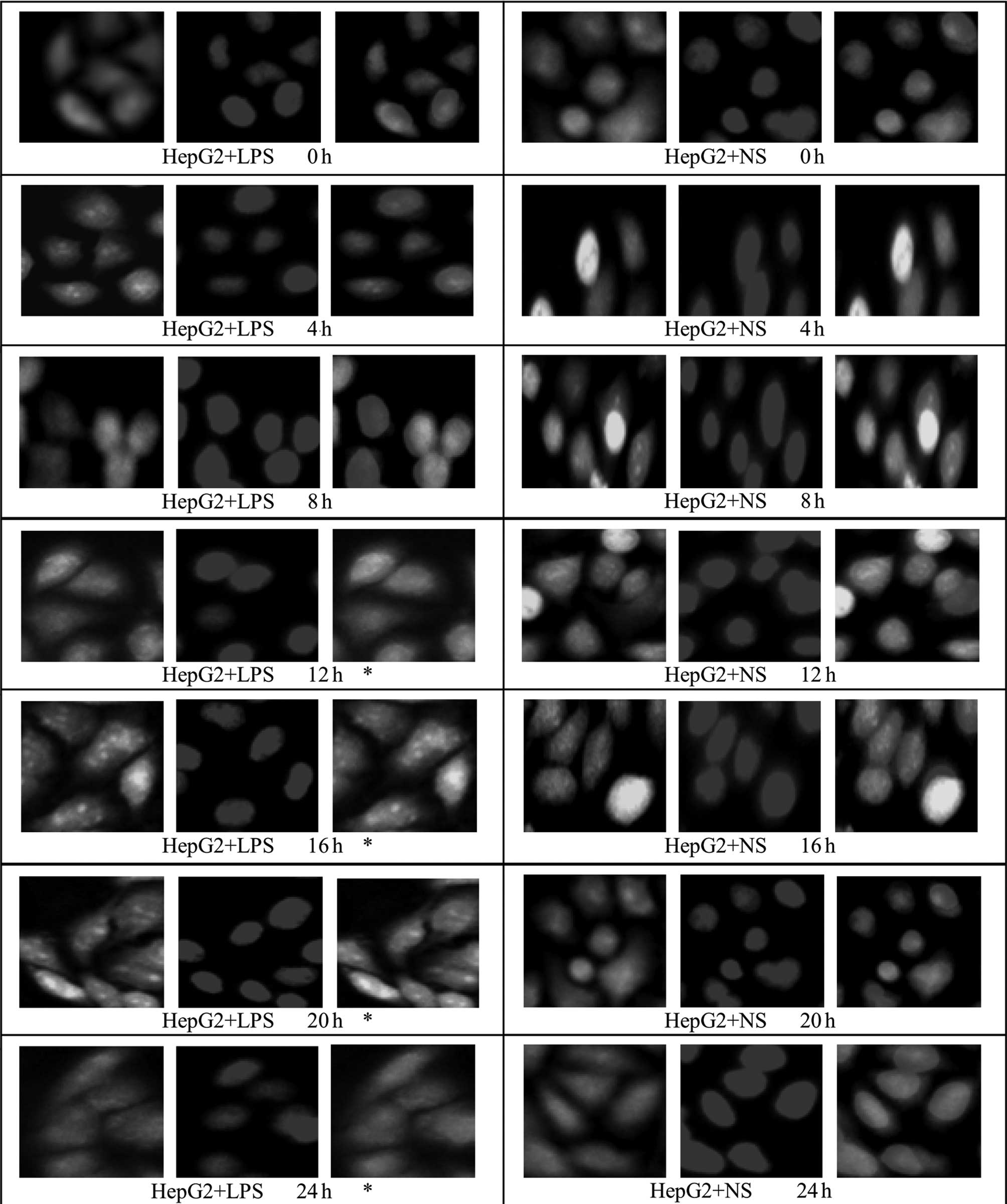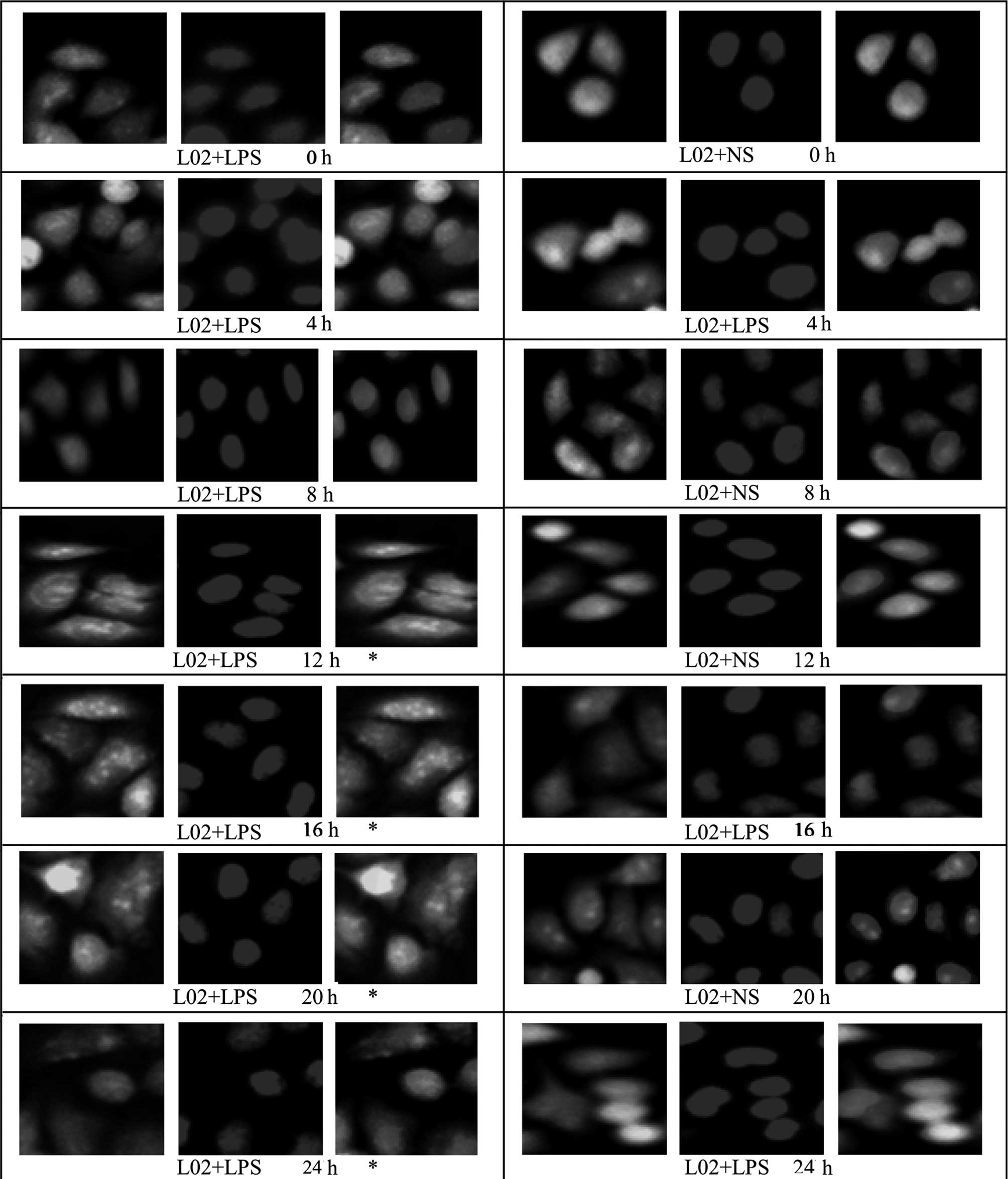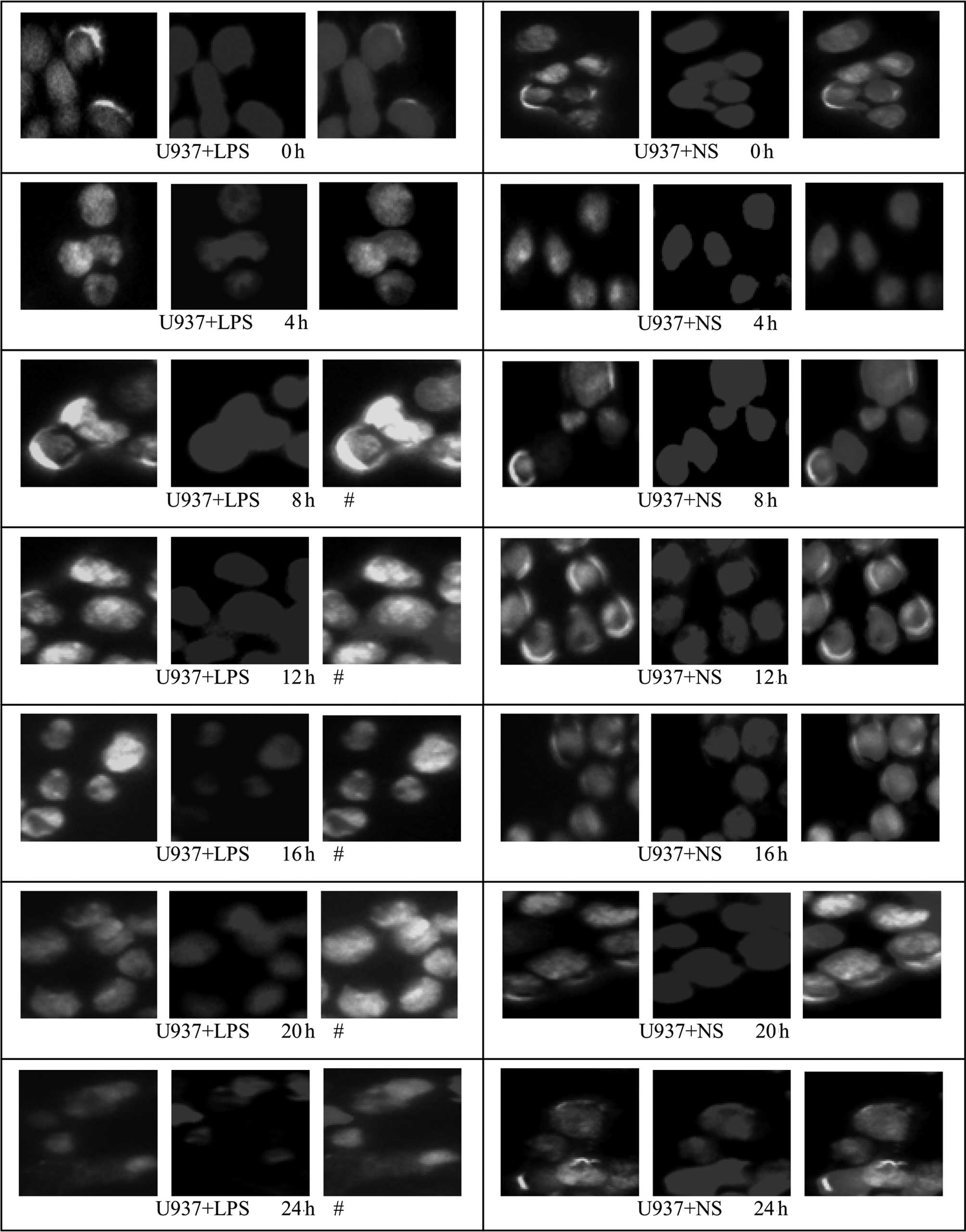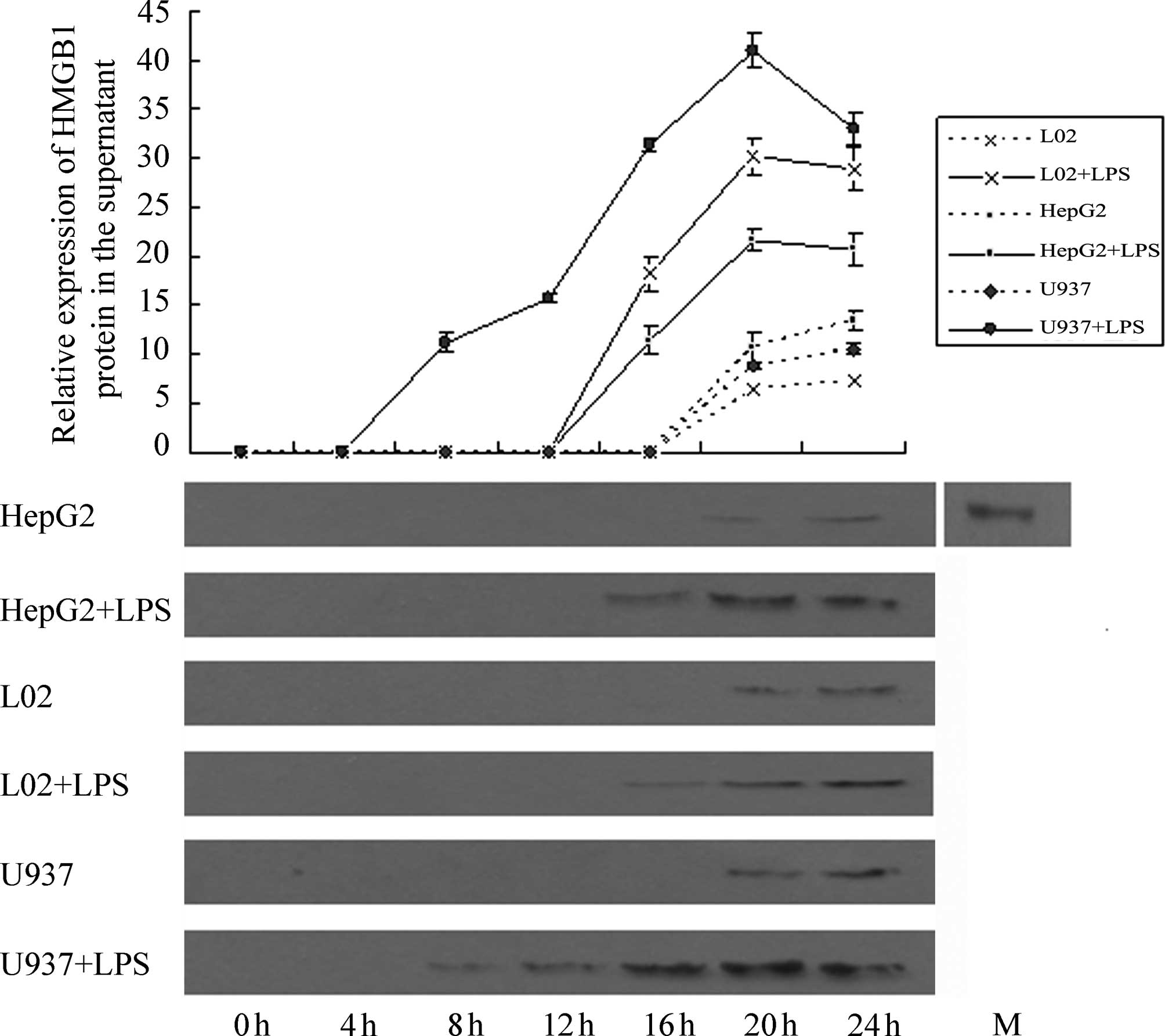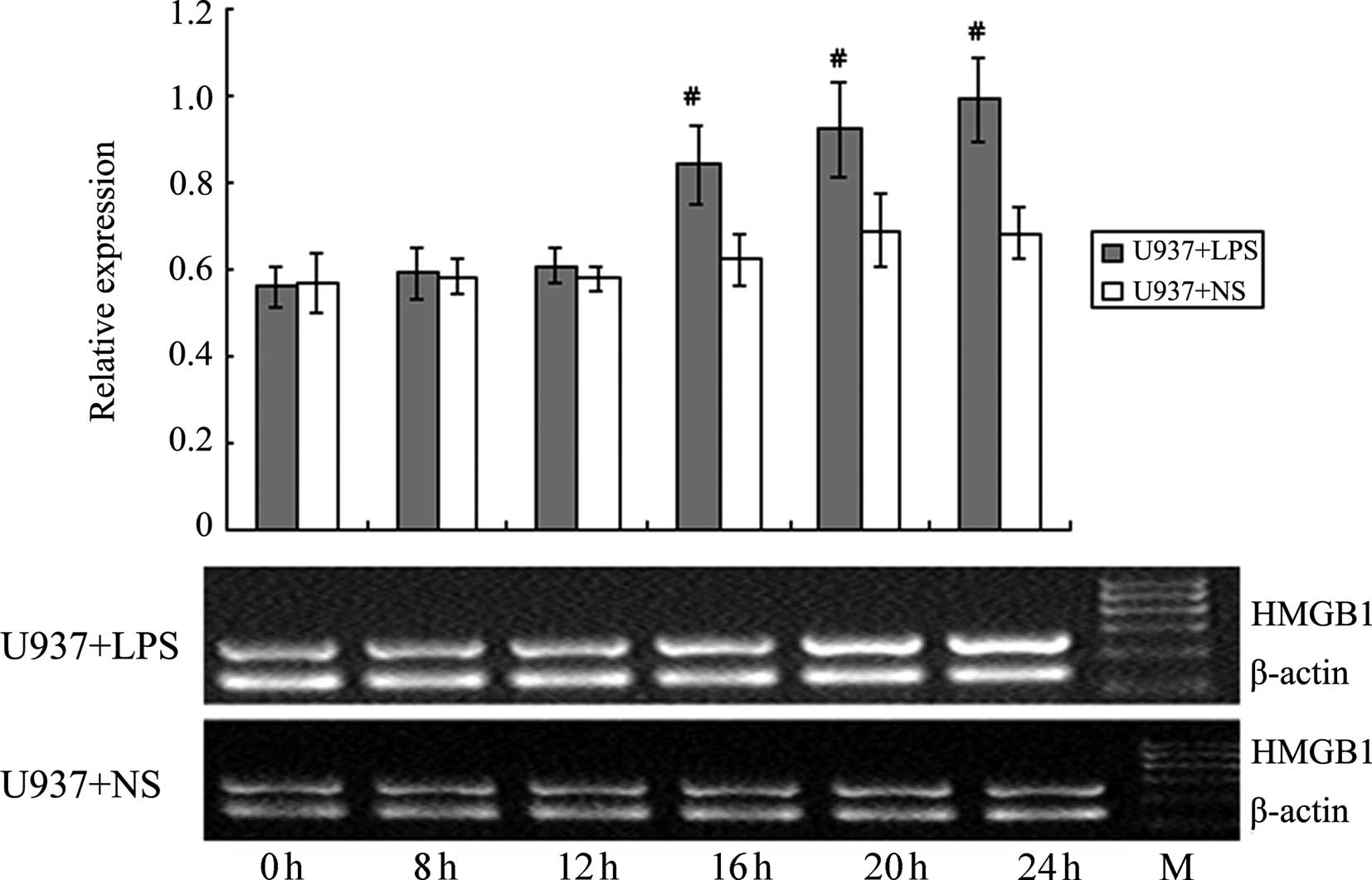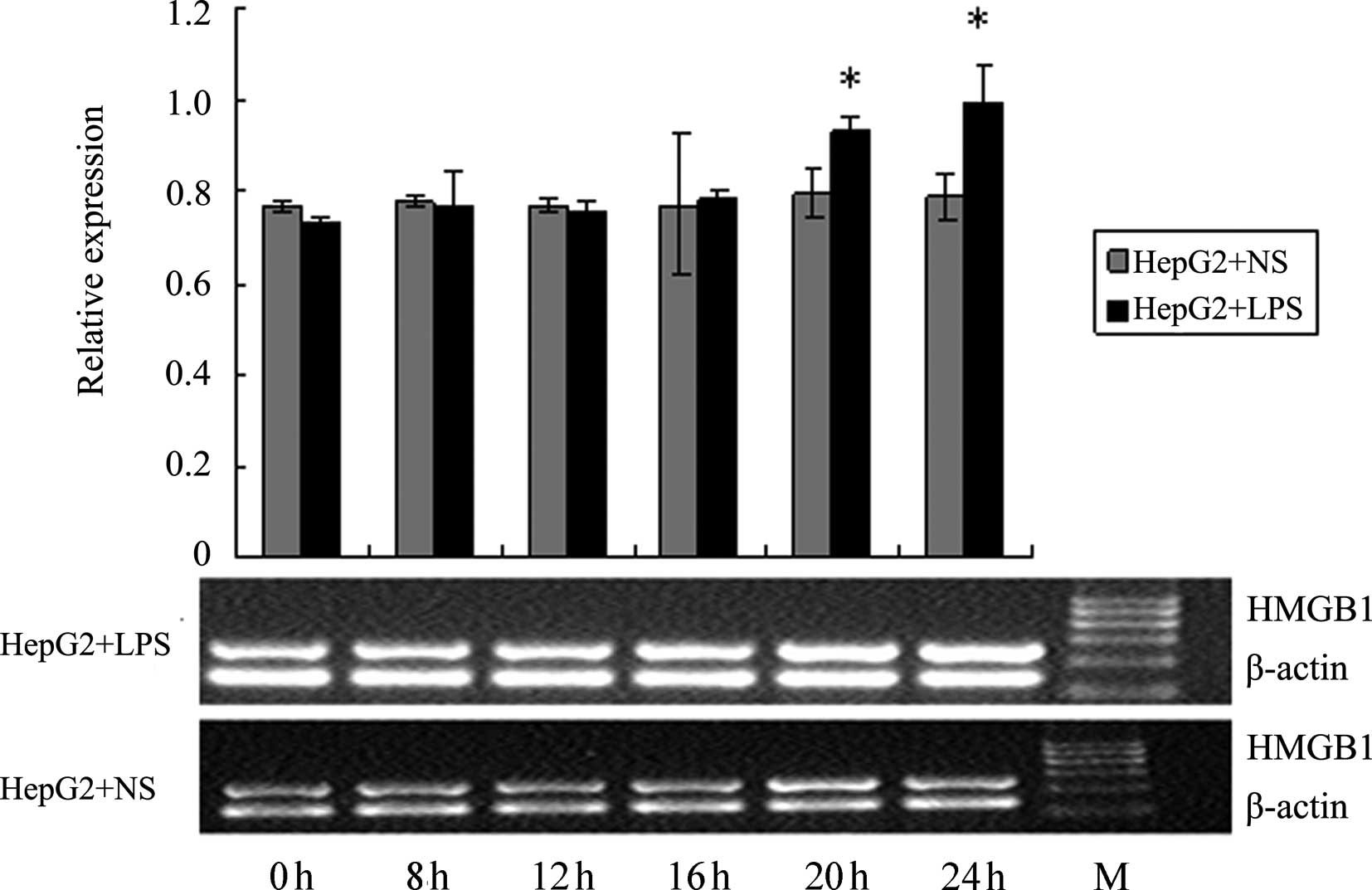HMGB1 release by human liver L02 and HepG2 cells induced by lipopolysaccharide
- Authors:
- Published online on: May 17, 2013 https://doi.org/10.3892/mmr.2013.1482
- Pages: 103-112
Metrics:
Total
Views: 0 (Spandidos Publications: | PMC Statistics:
)
Total PDF Downloads: 0 (Spandidos Publications: | PMC Statistics:
)
Abstract
Liver cells release the high mobility group box-1 (HMGB1) protein when exposed to lipopolysaccharides (LPSs). However, the timing and levels of protein released remain unclear. The present study aimed to characterize the secretion of the late pro-inflammatory cytokine HMGB1 by liver L02 and HepG2 cells. The human mononuclear macrophage cell line U937 was used as a control. Various concentrations of LPS were added to human U937, L02 and HepG2 cells for different durations, and the cells were analyzed at different time-points following this addition. Reverse transcription polymerase chain reaction (RT-PCR) was used to measure cellular HMGB1 mRNA levels, western blotting was performed to detect HMGB1 in cellular supernatants and the translocation of HMGB1 from the nucleus to the cytosol was examined using immunofluorescence staining. L02 and HepG2 cells exhibited higher HMGB1 mRNA levels compared with the control U937 cells 20 and 24 h following continuous exposure to LPS. U937 cells exhibited higher HMGB1 mRNA levels compared with the corresponding L02 and HepG2 cells 16 h following LPS exposure. The phase of HMGB1 protein detected in the cellular supernatants of L02 and HepG2 cells (16 h) was later than that of U937 cells (8 h). For the three cell lines, HMGB1 levels demonstrated a time dependency; however, the protein level was the highest in U937 cells. In the three cell lines, translocation of HMGB1 from the nucleus to the cytosol occurred; however, the phases of HMGB1 translocation in L02 and HepG2 cells occurred later than in U937 cells. LPS-induced secretion of the late pro‑inflammatory cytokine HMGB1 by liver cells is characterized by a late phase of release and smaller quantity, and the process of HMGB1 secretion appears to be associated with HMGB1 translocation.



